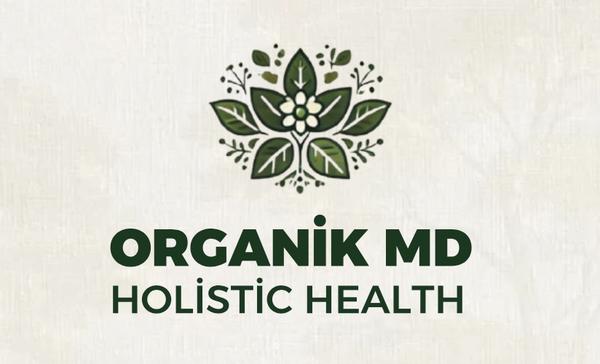What is Mold?
Mold is a type of fungus that grows in the form of multicellular filaments called hyphae. Unlike plants, molds do not use photosynthesis to create their food. Instead, they feed on organic matter, breaking it down and absorbing nutrients. Molds are found virtually everywhere in the environment, both indoors and outdoors. While mold plays a crucial role in breaking down dead organic material in nature, its presence indoors can pose serious health risks.
Common Types of Indoor Mold
Several types of mold can be found indoors, each with different characteristics and health implications:
- Aspergillus: Commonly found in homes, especially in damp areas like basements or bathrooms. It can cause respiratory issues, particularly in people with weakened immune systems.
- Cladosporium: Found on wood, carpets, and fabrics. It thrives in both warm and cool areas. It can cause allergic reactions and respiratory problems.
- Stachybotrys (Black Mold): Often grows in areas that are consistently damp, such as behind walls or under floors where there has been water damage. Black mold is notorious for producing mycotoxins, which can lead to severe health issues.
- Penicillium: Common in water-damaged buildings and is known for its blue or green color. It can cause allergies and asthma, and some species produce mycotoxins.
How Mold Grows and Spreads
Mold reproduces through tiny spores that float through the air. These spores can land on damp surfaces and begin to grow. Mold growth indoors is often triggered by moisture issues, such as leaks, high humidity, or condensation. Mold can grow on a variety of materials, including wood, paper, carpet, and food. Once mold begins to grow, it can spread quickly under the right conditions.
Health Effects of Mold Exposure
Exposure to mold can have a wide range of health effects, depending on the type of mold and the extent of exposure. Common symptoms of mold exposure include:
- Allergic Reactions: Many people are sensitive to mold and can experience symptoms such as sneezing, runny nose, red eyes, and skin rash. Mold allergies are particularly common in individuals with a history of allergies or asthma.
- Respiratory Issues: Mold spores can irritate the respiratory system, leading to coughing, wheezing, and shortness of breath. In people with asthma, mold exposure can trigger asthma attacks.
- Sinus Congestion and Headaches: Some individuals report sinus congestion, headaches, and dizziness as a result of mold exposure.
- Fungal Infections: In rare cases, mold can cause infections, particularly in individuals with weakened immune systems, such as those undergoing chemotherapy or living with HIV/AIDS.
- Toxic Reactions: Certain types of mold, like black mold, produce mycotoxins, which can lead to more severe health issues, including neurological symptoms, chronic fatigue, and organ damage in extreme cases.

Identifying Mold in Your Home
Identifying mold in your home can be challenging, especially if it is hidden behind walls or under flooring. However, there are some signs to look out for:
- Visible Mold Growth: Mold often appears as black, green, or white patches on walls, ceilings, or other surfaces. It can also look like a powdery or fuzzy substance.
- Musty Odor: Mold often produces a distinctive musty or earthy smell. If you notice a persistent, unpleasant odor in your home, it could be a sign of hidden mold.
- Water Damage: Mold thrives in damp conditions. Areas that have experienced water damage, such as leaky roofs, burst pipes, or flooding, are at high risk for mold growth.
Preventing Mold Growth
Preventing mold growth involves controlling moisture levels in your home. Here are some steps to reduce the risk of mold:
- Fix Leaks and Water Damage: Repair any leaks in roofs, walls, or plumbing promptly to prevent moisture buildup.
- Control Humidity Levels: Use dehumidifiers and air conditioners to maintain indoor humidity levels below 60%. Proper ventilation in bathrooms and kitchens can also help reduce moisture.
- Clean and Dry Wet Areas: Clean up any spills or water leaks promptly. Ensure wet areas, such as bathrooms and kitchens, are dried thoroughly.
- Use Mold-Resistant Products: Consider using mold-resistant drywall, paint, and insulation in areas prone to moisture, like basements and bathrooms.
- Monitor Indoor Plants: Overwatering houseplants can create conditions conducive to mold growth. Ensure your plants are well-drained, and avoid excessive watering.
What to Do If You Find Mold
If you discover mold in your home, it is important to address it promptly to prevent health issues and further damage to your property. Here’s what you can do:
- Small Areas: For small areas (less than 10 square feet), you may be able to clean the mold yourself using a mixture of water and detergent. Ensure you wear protective gear, such as gloves and a mask, to avoid inhaling spores.
- Larger Areas: For larger areas or if the mold is caused by sewage or contaminated water, it's best to hire a professional mold remediation service. Professionals have the necessary equipment and expertise to remove mold safely and effectively.
Mold can be a hidden threat to your health and home. Understanding the risks associated with mold exposure and taking proactive steps to prevent its growth can help protect you and your family. If you suspect mold in your home, take action promptly to mitigate its effects and maintain a healthy living environment.

